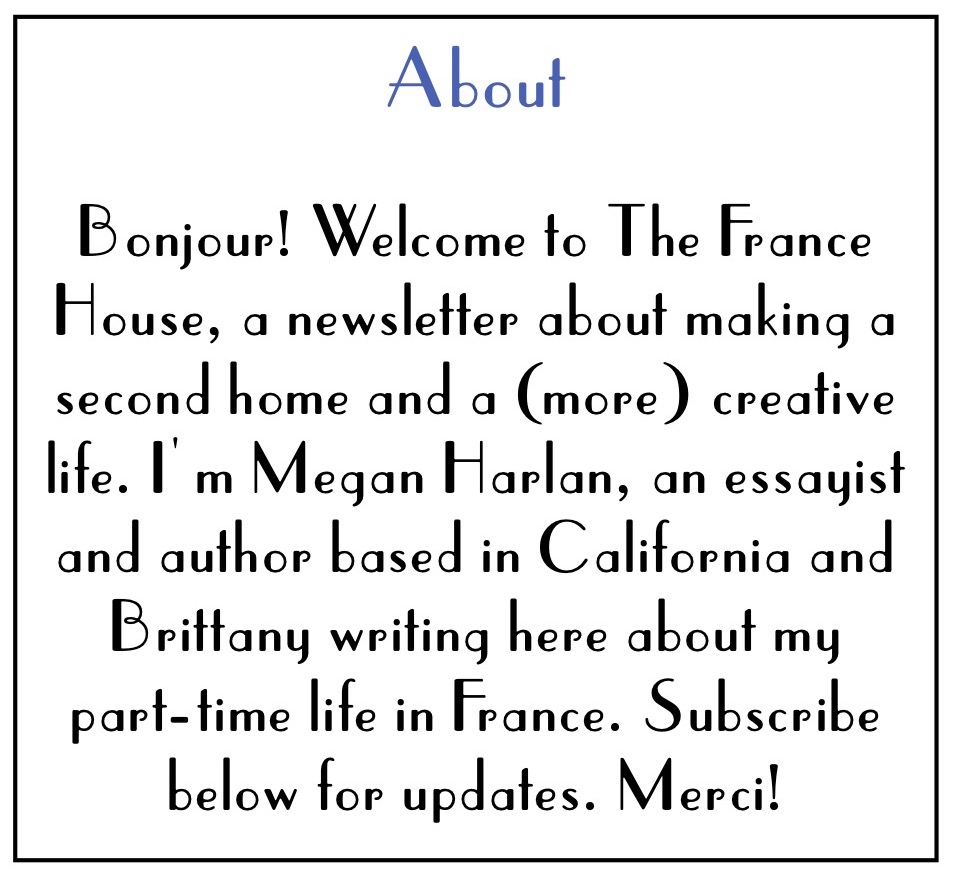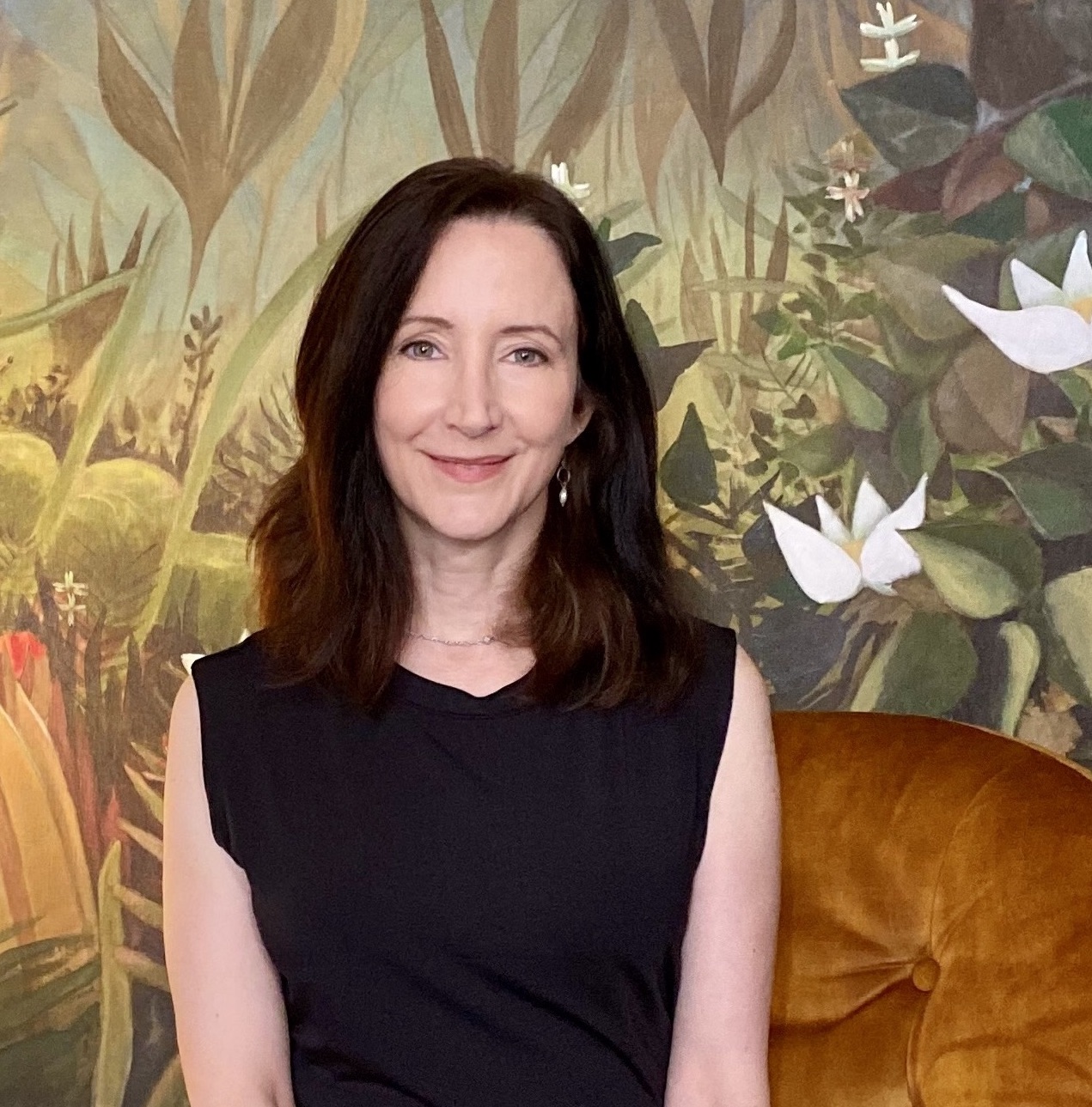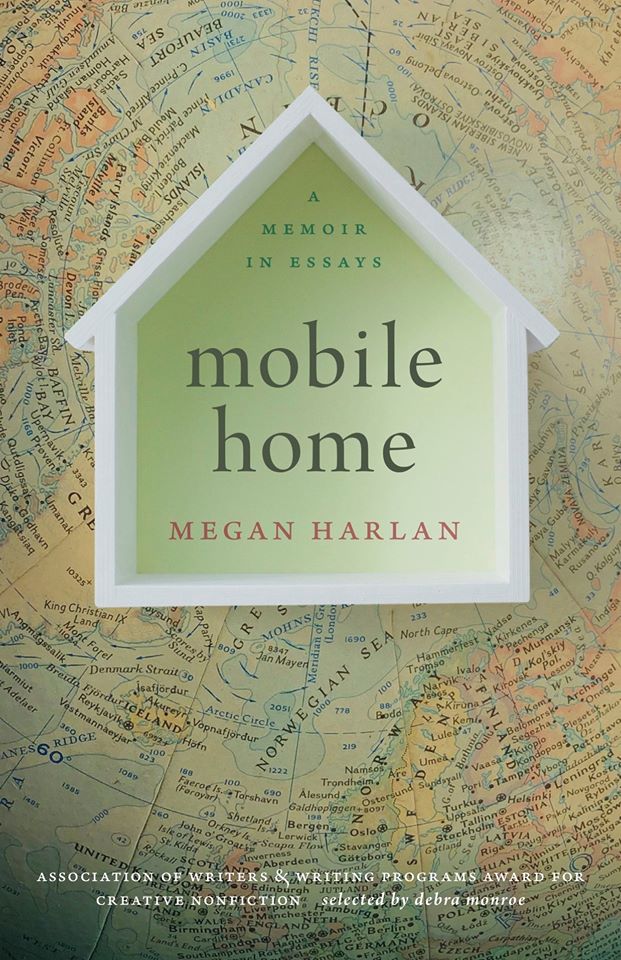On choosing a seasonal, French-and-American life.
By Megan Harlan
Today we usually use the word “nomadic” to mean something like “living on the road” or “moving around a lot” or “traveling a whole bunch.” Since COVID, the “digital nomad” embodies a trope for that lucky traveler free to do their virtual work (aka “email job”) from gorgeous beaches and charming cafés across the world—a person tied to nowhere in particular.
But I think of nomadism a little differently. I want to start this piece about living a “nomadic” French-and-American life by considering neither France nor the U.S., but rather Saudi Arabia—one of several countries I called home growing up. As an expat kid in the 1970s, I saw real nomads, the Bedouin, still out in the desert in those years, following tribal traditions that go back millennia. These indigenous Arab camel-herders lived in black wool tents with their families, moving across the sands to a rotation of spots where their animals could best graze—travel always dictated by the seasons.

The original nomadic lifestyle: a Bedouin black tent in the desert. (Credit: yeowatsup, CC License)
This original meaning of the word “nomad” is one I explore in my memoir-in-essays, Mobile Home, especially the opening chapter, “A History of Nomadism” (which you can read at this link). Here I’d like to highlight the way true nomadism involves a seasonal re-visiting. Traditional nomads rotate around a small circuit of familiar places, locations always returned to the following year. It involves a very different sensibility from, say, a backpacker drifting from one new place to the next, or our friend, the digital nomad, roaming far and wide with no final destination in sight. In my 20s in particular, I did this latter kind of travel for months at a time—and loved it, exhilarated to see as much of the world as I could.

Me at the Equator in Sumatra, Indonesia, during my backpacking years.
But now in midlife, my desire is different. I’ve been forging a new relationship to travel, to place, and most of all to my idea of home.
At my primary home in California, I’ve lived a bog-standard family life—and one always tethered to the American school year. My partner and I bought our house in our dense Bay Area neighborhood so our kid could attend public schools in a good district, and so we could all easily walk to parks, friends, restaurants, stores. It’s been lovely, stable, and almost completely unremarkable. It’s happily culminating in my son heading off to college in the Fall. But for someone like me, often gripped several times daily by bouts of farsickness—a call to another, distant place—it’s been a challenge to stay put.
Knowing I can ditch my official home on the regular gives me my necessary shot of freedom—a potent source of endorphins for me. But instead of taking another vacation, my desire is to establish roots somewhere else, not to float unencumbered through the world. My drive for deeper meaning these days involves cultivation, an enjoyment of both receiving from and giving to a place, of helping to build something good or at least to share in a sense of what that good is. I don’t have to be fully defined by or pinned down to either home, but am free to establish the relationship I want with each one.
My family’s seasonal nomadic route comes alive in the summer months and midwinter break, when we’ve headed to our France House for five years now. And in France, without fail, I feel more like myself—core aspects of myself beyond my “mom-ness,” anyway—thanks to its adult-friendly society, one that values the arts so much more than the tech bro homeland the Bay Area has become. This isn’t even touching the widening political differences between France and the United States, how democracy is faring in each country—a topic you don’t need me to go into. Whether because of its culture, politics, or the complicated web of each, France refreshes my soul and my sense of values like nothing and nowhere else.

Midsummer rose bloom in Dinan (Couvent des Cordeliers).
Do you have that place? Are you reading this because you’re thinking about moving to France—or to Portugal, or Mexico, or Italy, or another extraordinary country and culture that pulls you like a magnet? If so, I am happy for you and hope very much you will pursue it. And if you’re interested, here’s my best advice:
Spend time there, regularly, at first. If you don’t want to buy a place there (a far more reasonable decision than the risky—though ultimately successful—one I made), then pick a spot to return to, that is “yours” in your mind: a short-term rental or hotel close to the heart of where you love most. Trust yourself that you’ll return next year; then do it. This relationship, this bond immediately shifts you from being a “tourist” to something closer to a true nomad. And make sure to join a local arts or heritage society—some organization that supports and promotes exactly what you love about the place. My family did that very early on in Dinan (choosing this fantastic group), and I feel so much more connected to its rich array of public art, musical, literary, and theatre offerings, not least because we meet new people—artists, neighbors, fellow travelers—at every event.

A seasonal art installation (with happy visitor) in the gardens of Abbaye de Léhon.
The day may come when I switch my primary and second homes. We’ll see. No doubt I still misunderstand so much about France, but that’s okay: it’s not like I fully “get” the United States either (and less so by the day). For now, each place reflects onto the other; I enjoy missing the other one when I’m not there. And I trust more the life I’ve purposefully chosen and continue to create. The movement between these two homes and countries is now built into the system: it’s where I live. It’s not perfect, it’s a bit more demanding—but its qualities and scale suit me far more than any other home.
I’ve hope you’ve found the place(s) where you truly feel at home—or will soon.










